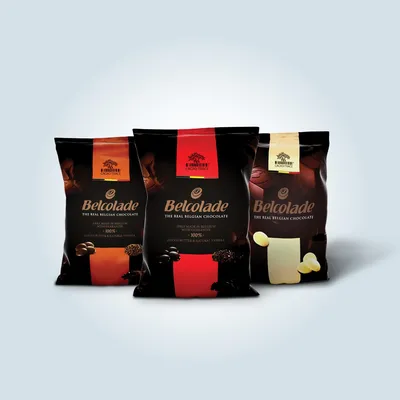How Puratos is making 25% water savings with the Andenne water reuse programme
9 Dec 2021
Meet Puratos’ newest employees: 68 orange and brown fish. They live in a fishpond next to the employee car park of our Andenne site, and their function is to control the quality of the water onsite. The fish happily swimming around the pond prove that the reused water from the production facility is of high quality. It’s safe enough for animals to live in. The fish are part of the Andenne water reuse programme, which filters, cleans and repurposes a quarter of the 800 cubic metres of water that is used here each day.

Achieving a 25% reduction in water usage
“Our site in Andenne, Belgium, uses the most water of the whole company,” explains Franck Cassé, Environmental Sustainability Programme Manager at Puratos. “Of all the water Puratos uses globally, almost 20% is used here! This is because of the nature of the Andenne site. Our production of sourdough, yeast extract, enzymes and the drying process… everything needs a lot of water.”
The water balance project at Andenne was a major sustainability initiative for Puratos. A quantity of the site’s wastewater is being repurposed as an alternative source of water supply to the factory, leading to a 25% reduction in water consumption. The global water footprint of Puratos has decreased by 4% thanks to this project.
From wastewater to un-wasted water
Initially, the wastewater that was discharged into the Meuse River was already of high quality. To further elevate the water quality, the project consisted of:
- Installing a sand filter to remove any small particles.
- Treating the water to prevent bacteria growing within the reuse circuit.
- Changing the piping, in order to reroute the used and cleaned water back to the production area.
The cleaned water is used in production for filtering and cleaning fumes from the sourdough drying process, for instance.
This way, less potable water is used in the production of our products. “Compare it to cleaning your car, or flushing the toilet” says Franck Cassé. “We now use drinking water to do this, which is very unnecessary: first you put a lot of energy into sanitising the water, and then you use it for things that don't require drinking water at all. Water should be used in a smarter way, and that’s what Puratos is working on.”

Not a drop will go to waste by 2030
Economical use of water is one of the main pillars of Puratos’ commitments to future generations: the goal is to become water balanced by 2030. The other target is to reduce our carbon emissions and become carbon neutral by 2025. “Puratos has committed itself to using no more water than we need, and to give the water back to the environment in good condition”, says Cassé. It was a great recognition of our efforts to be awarded a Grade B for our first report to CDP Water, a charity that runs a global disclosure system to manage environmental impact.
In the future, all water Puratos uses will come from sustainable sources. Groundwater is used where possible, and if there isn't enough we opt for rainwater, for example. For our biggest chocolate production site we’re working on increasing the use of rainwater to 50% of the total consumption. Where possible, water will be reused like in Andenne. And of course, every drop of water leaving our facilities is safe for nature and animals.
No water, no products
As a food company, Puratos needs water to operate. Not just as an ingredient, but also for cooling, cleaning and for use by the people on our sites. Each year, we use 1.8 million cubic metres of water. This is equivalent to 720 Olympic swimming pools. Because water is so important, there are multiple projects around the world to reduce water usage and improve the quality of the water that is discharged.
Alongside the improvement of the Andenne facility, Puratos opened a wastewater treatment plant in Vietnam and started construction of one in Indonesia. And at our biggest chocolate production site, adjustments have been made to obtain 20% of the water from rain, which will be increased to 90% in 2023. At all these production facilities, a fishpond is installed to demonstrate that the water is safe. Happy fish equals a happy planet.
Discover more about our goal to become carbon neutral by 2025 or learn more about Puratos’ sustainability strategy – Our Commitment to You and to Future Generations.



